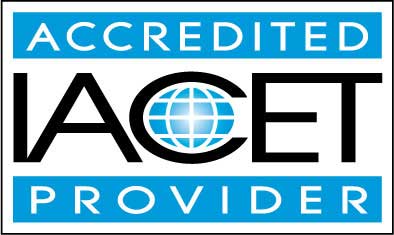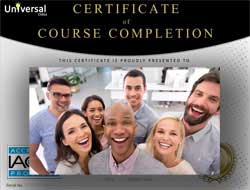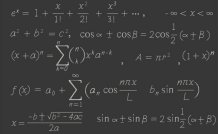Online Class: Statistics 101

no certificate
with CEU Certificate*
-
15Lessons
-
26Exams &
Assignments -
4,709Students
have taken this course -
35Hours
average time -
3.5CEUs
Course Description
This statistics course introduces the basic concepts of statistical analysis, with a focus on both univariate (single-variable) and bivariate (two-variable) data. The course starts with an introduction to statistics terms and then moves on to organization and display of data. Analysis of univariate data by way of measures of central tendency (such as the mean or average), dispersion (such as the variance), and asymmetry ("skewness") is presented next, followed by an introduction to probability theory.
The relationship of probability to statistics is also discussed, providing students with the tools they need to understand how "chance" plays a role in statistical analysis. Statistical distributions, with a focus on the normal distribution and its uses, are also considered, along with a discussion of bivariate data and linear (least-squares) regression. Finally, the course culminates with a low-level introduction to hypothesis testing. Although this last topic could be a course of its own, the student is provided with enough theory and sufficient practice to conduct analyses of simple statistical hypotheses.
Statistics is a subject that has earned a certain amount of notoriety because of its misuse in various contexts. Nevertheless, statistics is a tool that, if used properly, can be of tremendous help in math, science, engineering, history, politics, and numerous other fields. As you study this subject, always keep in mind that statistics is more than just math: it is not simply manipulation of numbers through addition, subtraction, multiplication, division, and other mathematical operations. Statistics also involves language and units: when a statistician (or layman) provides a statistic, it involves a number and a label of some sort. For instance, the number 5.3 is not in and of itself a statistical value; "an average age of 5.3 years," however, is a statistical value. This linguistic aspect of statistics sometimes allows a certain amount of ambiguity that can be misleading. By studying statistics, you will equip yourself to identify and understand both uses and abuses of this tool.
What is Statistics?
Statistics is used for quantifying sets of data such as attributes of a group of people and measurements taken in a laboratory. Consider, for instance, the population of a particular country. The people who reside in that country have varying heights: some are short, some are tall, some are in between. If we wanted to compare the height of this population with that of some other population in a convenient manner, we would not want to compare individual people. Such a task would be burdensome (the number of people in a country might be in the millions or billions) and would not necessarily be particularly helpful as a means of comparing populations as a whole. Instead, we can use an average or median height as the basis for our comparison. These statistical values are single numbers that quantify the data (the heights of a country's population) and that provide a convenient way to express and compare certain characteristics of those data. Part of the goal of this course is to teach you how to select and use statistical tools like averages and medians, as well as a host of others, in assessing and comparing data.
Simply defined, statistics (sometimes colloquially termed "stats") is the study of collecting, analyzing, interpreting, and representing of sets of numerical data. Thus, virtually any field of study that uses numbers can, at least occasionally, involve statistics. Statistics, because it makes extensive use of numbers, is math-intensive, and a decent grasp of basic arithmetic and algebra is required to study this field.
- Completely Online
- Self-Paced
- 6 Months to Complete
- 24/7 Availability
- Start Anytime
- PC & Mac Compatible
- Android & iOS Friendly
- Accredited CEUs

Course Lessons
Lesson 1 - Statistics Terms and Motivation
 Lesson 1 Video A
Lesson 1 Video A
 Lesson 1 Video B
: How to Take an Exam
Lesson 1 Video B
: How to Take an Exam
 Lesson discussions: Reasons for Taking this Course
Lesson discussions: Reasons for Taking this Course Complete Assignment: Introduction
Complete Assignment: Introduction Assessment: Lesson 1 Statistics Terms and Motivation
Assessment: Lesson 1 Statistics Terms and Motivation
Lesson 2 - Displaying Statistical Data
 Lesson 2 Video
Lesson 2 Video Assessment: Lesson 2 Displaying Statistical Data
Assessment: Lesson 2 Displaying Statistical Data
Lesson 3 - Measures of Central Tendency
 Lesson 3 Video
Lesson 3 Video Assessment: Lesson 3 Measures of Central Tendency
Assessment: Lesson 3 Measures of Central Tendency Assessment: Lesson 3 Exercises
Assessment: Lesson 3 Exercises
Lesson 4 - Selecting an Appropriate Measure of Central Tendency
 Lesson 4 Video
Lesson 4 Video Assessment: Lesson 4 Selecting an Appropriate Measure of Central Tendency
Assessment: Lesson 4 Selecting an Appropriate Measure of Central Tendency
Lesson 5 - Measures of Dispersion
 Lesson 5 Video
Lesson 5 Video Assessment: Lesson 5 Measures of Dispersion
Assessment: Lesson 5 Measures of Dispersion Assessment: Lesson 5 Exercises
Assessment: Lesson 5 Exercises
Lesson 6 - Measures of Asymmetry
 Lesson 6 Video
Lesson 6 Video Assessment: Lesson 6 Measures of Asymmetry
Assessment: Lesson 6 Measures of Asymmetry
Lesson 7 - Other Statistical Measures
 Lesson 7 Video
Lesson 7 Video Assessment: Lesson 7 Other Statistical Measures
Assessment: Lesson 7 Other Statistical Measures Assessment: Lesson 7 Exercises
Assessment: Lesson 7 Exercises
Lesson 8 - Introduction to Probability I
 Lesson 8 Video
Lesson 8 Video Assessment: Lesson 8 Introduction to Probability I
Assessment: Lesson 8 Introduction to Probability I Assessment: Lesson 8 Exercises
Assessment: Lesson 8 Exercises
Lesson 9 - Introduction to Probability II
 Lesson 9 Video
Lesson 9 Video Assessment: Lesson 9 Introduction to Probability II
Assessment: Lesson 9 Introduction to Probability II Assessment: Lesson 9 Exercises
Assessment: Lesson 9 Exercises
Lesson 10 - Statistical Distributions
 Lesson 10 Video
Lesson 10 Video Assessment: Lesson 10 Statistical Distributions
Assessment: Lesson 10 Statistical Distributions Assessment: Lesson 10 Exercises
Assessment: Lesson 10 Exercises
Lesson 11 - The Normal Distribution
 Lesson 11 Video
Lesson 11 Video Assessment: Lesson 11 The Normal Distribution
Assessment: Lesson 11 The Normal Distribution Assessment: Lesson 11 Exercises
Assessment: Lesson 11 Exercises
Lesson 12 - Bivariate Data
 Lesson 12 Video
Lesson 12 Video Assessment: Lesson 12 Bivariate Data
Assessment: Lesson 12 Bivariate Data
Lesson 13 - Regression Analysis
 Lesson 13 Video
Lesson 13 Video Assessment: Lesson 13 Regression Analysis
Assessment: Lesson 13 Regression Analysis
Lesson 14 - Introduction to Hypothesis Testing I
 Lesson 14 Video
Lesson 14 Video Assessment: Lesson 14 Introduction to Hypothesis Testing I
Assessment: Lesson 14 Introduction to Hypothesis Testing I Assessment: Lesson 14 Exercises
Assessment: Lesson 14 Exercises
Lesson 15 - Introduction to Hypothesis Testing II
 Lesson 15 Video
Lesson 15 Video Lesson discussions: How would you rate this course?; Program Evaluation Follow-up Survey (End of Course); Course Comments
Lesson discussions: How would you rate this course?; Program Evaluation Follow-up Survey (End of Course); Course Comments Assessment: Lesson 15 Introduction to Hypothesis Testing II
Assessment: Lesson 15 Introduction to Hypothesis Testing II Assessment: The Final Exam
Assessment: The Final Exam Assessment: Lesson 15 Exercises
Assessment: Lesson 15 Exercises
Learning Outcomes
- Define statistics terms.
- Display statistical data.
- Define measures of central tendency.
- Select an appropriate measure of central tendency.
- Define measures of dispersion.
- Describe measures of asymmetry.
- Describe Probability I problems
- Describe and solve Probability II problems.
- Summarize statistical distributions.
- Describe the normal distribution.
- Describe bivariate data.
- Perform regression analysis.
- Describe Hypothesis Testing I and II.
- Demonstrate mastery of lesson content at levels of 70% or higher.
Additional Course Information

- Document Your Lifelong Learning Achievements
- Earn an Official Certificate Documenting Course Hours and CEUs
- Verify Your Certificate with a Unique Serial Number Online
- View and Share Your Certificate Online or Download/Print as PDF
- Display Your Certificate on Your Resume and Promote Your Achievements Using Social Media

Choose Your Subscription Plan
No Certificate / No CEUs
This course only
| Includes certificate | X |
| Includes CEUs | X |
| Self-paced |

|
| Instructor support |

|
| Time to complete | 6 months |
| No. of courses | 1 course |
Certificate & CEUs
This course only
| Includes certificate |

|
| Includes CEUs |

|
| Self-paced |

|
| Instructor support |

|
| Time to complete | 6 months |
| No. of courses | 1 course |
Certificates & CEUs
Includes all 600+ courses
| Includes certificate |

|
| Includes CEUs |

|
| Self-paced |

|
| Instructor support |

|
| Time to complete | 12 Months |
| No. of courses | 600+ |
Certificates & CEUs
Includes all 600+ courses
| Includes certificate |

|
| Includes CEUs |

|
| Self-paced |

|
| Instructor support |

|
| Time to complete | 24 Months |
| No. of courses | 600+ |
Student Testimonials
- "Great timely feedback!" -- Audrey K.
- "I found that the course resources helpful. I needed it especially for the lesson on normal distriuubtion. I needed to refer to it for the z-scores." -- Tiffany L.
- "I found the course very interesting and the instructor was very helpful. Well organized chapters and the practice problems." -- Gayatri M.
- "I found all the parts to be helpful." -- Nancy G.
- "My course instructor was very prompt in providing feedback and responding to emails and tried to clarify concepts that I had questions on." -- Kimberlly S.
- "I like that the course was organized well." -- Kimberlly S.
- "Very knowledgeable and helpful instructor. This course set-up is much more user friendly than other statistics refreshers I have tried." -- Julie R.
- "The lessons are laid out very nicely. They tell you what you need to now for the most part. My instructor answered questions promptly and with detail." -- Julie R.
- "The instructor is wonderful. I would have him as an instructor again." -- Cynthia M.
- "The Instructor was very pleasant, offering words of encouragement when I did poorly on the second exam. He was fairly prompt with grading assignments and answering emails. I would recommend him for this class in the future." -- Jessica S.
Related Courses
-
 6 hours
0.6 CEUs
Sustainable Development for Business
+ More Info
6 hours
0.6 CEUs
Sustainable Development for Business
+ More Info
-
 7 hours
0.7 CEUs
Introduction to Logic
+ More Info
7 hours
0.7 CEUs
Introduction to Logic
+ More Info
-
 8 hours
0.8 CEUs
Quicken Tutorial: All Versions
+ More Info
8 hours
0.8 CEUs
Quicken Tutorial: All Versions
+ More Info
-
 8 hours
0.8 CEUs
Teaching Grammar to ESL Students
+ More Info
8 hours
0.8 CEUs
Teaching Grammar to ESL Students
+ More Info
-
 21 hours
2.1 CEUs
Applied Statistics 101
+ More Info
21 hours
2.1 CEUs
Applied Statistics 101
+ More Info
-
 14 hours
1.4 CEUs
Pre-Algebra 101
+ More Info
14 hours
1.4 CEUs
Pre-Algebra 101
+ More Info
-
 7 hours
0.7 CEUs
Business Analysis
+ More Info
7 hours
0.7 CEUs
Business Analysis
+ More Info
-
 22 hours
2.2 CEUs
ABCs of Algebra
+ More Info
22 hours
2.2 CEUs
ABCs of Algebra
+ More Info
-
 12 hours
1.2 CEUs
Business Math 101
+ More Info
12 hours
1.2 CEUs
Business Math 101
+ More Info
-
 19 hours
1.9 CEUs
Electronics 101
+ More Info
19 hours
1.9 CEUs
Electronics 101
+ More Info
-
 14 hours
1.4 CEUs
QuickBooks Online
+ More Info
14 hours
1.4 CEUs
QuickBooks Online
+ More Info
-
 7 hours
0.7 CEUs
Organizational Behavior in Business
+ More Info
7 hours
0.7 CEUs
Organizational Behavior in Business
+ More Info
-
 17 hours
1.7 CEUs
Basic Math 101
+ More Info
17 hours
1.7 CEUs
Basic Math 101
+ More Info
-
 35 hours
3.5 CEUs
Precalculus 101
+ More Info
35 hours
3.5 CEUs
Precalculus 101
+ More Info









